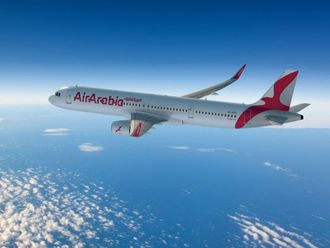Chicago: Boeing Co. sees a $15 trillion (Dh55 trillion) market for aeroplanes and supporting services over the next two decades, driven largely by budget carriers and the narrow-body jets they favour to haul travellers.
Based on the current robust market, the manufacturer projects that airlines will need to order about 42,700 new passenger aeroplanes worth a total $6.3 trillion to meet demand over the next two decades — some 1,700 more aircraft sales than it forecast last year.
Nearly three-quarters of the expected sales will be for single-aisle jetliners that are the workhorses of low-cost airlines around the globe. Also included are 8,070 wide-body jets valued at $2.5 trillion, and 2,320 regional jets worth $110 billion — numbers that are about the same as in Boeing’s 2017 outlook.
The bullish annual forecast by the Chicago-based plane maker comes amid nine years of unprecedented growth for aerospace. Air travel is booming as global trade and economic growth in emerging markets from China to Brazil lift about 160 million people into the middle class each year.
Boeing’s predictions are derived from a blend of economic and airline-user data. The forecast doesn’t include the potential ripple-effects from near-term geopolitical turmoil or escalating trade tensions, which could significantly change the demand trends.
The plane maker, which formed a new services division last year, sees additional demand of $8.8 trillion for commercial aviation services through 2037.
Grabbing share
“Single-aisle jets continue to get more capable, they are grabbing some of the share from the wide-bodies,” said Randy Tinseth, a Boeing vice-president for commercial marketing. He was referring to a new generation of Boeing 737 Max and Airbus SE A320neo narrow-body aircraft that boast powerful engines and enough range to fly trans-Atlantic routes.
Boeing sees an even larger market looming for services such as spare parts, aircraft modification and data monitoring of sensors designed to predict maintenance issues. The trend goes hand-in-hand with the ascent of budget carriers, since many new and rapidly growing airlines outsource maintenance and other infrastructure needs.
Asia Pacific will command the lion’s share of the market — 38 per cent — followed by North America.
The Asia-Pacific region will continue to be the world’s hottest market over the next 20 years, Boeing predicted, accounting for about 40 per cent of new aeroplane deliveries. North America, the current market leader, combined with Europe, will account for another 40 per cent of future aeroplane demand.










